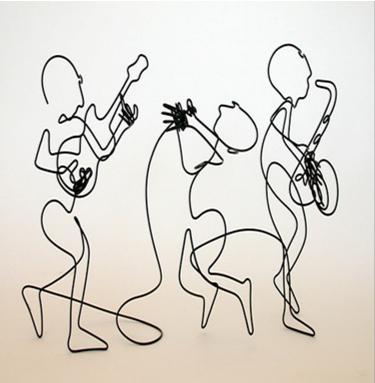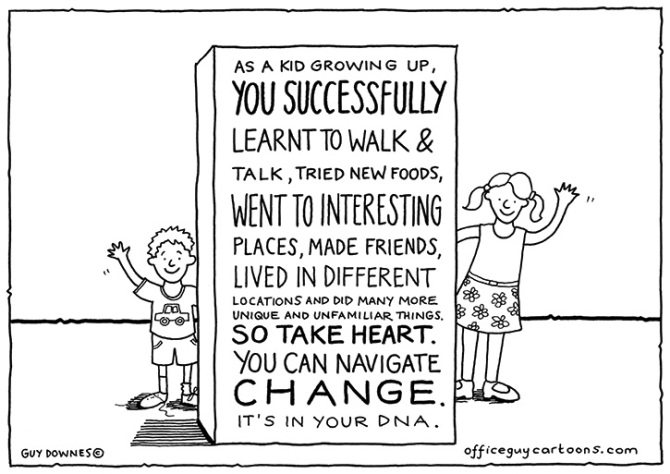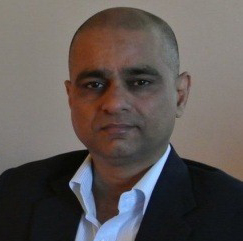
Would you like to start a conversation with other industry leaders to brainstorm a challenge or to just know more on a particular topic?
Engage in online discussions with your Peers
Start NowA line is a dot that went for a walk.–Paul Klee
The dot taking a predictable walk results in a straight line, which is what most readers would visualize spontaneously while reading the above.................................
A random walk – a walk deviating from the routine – might lead to something new, something creative, something that could possibly change the world around us.

Continuous Line Art
Courtesy: darkroastedblend.com
A straight line or a drawing of a specific shape and size is formed if it is drawn in a particular way, through a “process”.
Especially, if there is a need to replicate it many times over, there is a need for a standard process that needs to be understood, designed, agreed, tested and implemented.
There is a ‘process’ in everything that is occurring around us, if only we learn how to ‘see’ it. From as mundane as getting ready and leaving for work every morning to readying a flight with 500+ people for take-off, there is a process involved, whether we are aware of it or not.
Managing processes
This is where Process Management comes into picture. There is a ‘process’ in everything that is occurring around us, if only we learn how to ‘see’ it. From as mundane as getting ready and leaving for work every morning to readying a flight with 500+ people for take-off, there is a process involved, whether we are aware of it or not.
But somehow, people think of processes consciously and intensely only when it comes to anything related to business.
Hence ‘Business Process Management’ (BPM) seems to have acquired a unique significance. Henry Ford, Steve Jobs, Bill gates and numerous others have had the requirements of replicating their inventions and scaling their businesses up to the sky and even beyond. The way they have conquered the world, even Alexander of Macedon would envy. To achieve this, the tens of thousands of their army had to bring out outputs in the same way they had envisioned. Hence, Business Process Management assumes utmost significance.
“No institution can possibly survive if it needs geniuses or supermen to manage it. The business must be organized in such a way as to be able to get along under a leadership composed of average human beings.” Peter Drucker.
But, successful organizations would want to sustain their ability to add value and thus, their competitive advantage. They have to create new products and also retain the best of brains. Thus, Business Process Management must look beyond mere awareness of the processes or the robotic repetition from the manuals. BPM has to ensure sustained excellence, thereby naturally assuming the nature of an art.
Peter Drucker called management a liberal art and he in fact brought lessons from sociology, psychology, philosophy, culture and why, even religion into his teachings on management.
BPM thus embraces art throughout. The art dimension would dominate, if an individual or a team is involved in BPM with passion, reasonable freedom, creativity and empowerment.
Looking Beyond the Function
Most professionals, especially in finance and accounting, may not be process oriented. Some of them would have understood the function well, while missing the process. BPM increases the visibility factor. A person who has a process orientation is able to see the “whole”, identifying bottlenecks and visualizing risks and enabling proactive action. Understanding the relationships and the end-to-end flow is science while improvising and adding excellence is more of an art.
“Risk comes from not knowing what you’re doing.”
–Warren Buffett
BPM is thus not a routine, predictable, boring job. BPM is not merely documenting what is. It is doing all things required to reach where you desire to be. In short, you design excellence.
“Design is not just what it looks like and feels like. Design is how it works.”
–Steve Jobs

To a crafty batsman, the cover drive is akin to an artist’s brush stroke. But for those who study it and use it to coach others, it could be more of a science. Art is more internalized. Even for the batsman himself, when he is made aware of a flaw in his game, the science takes over in precisely measuring, for example, the extra unnecessary leg movement or the bat lift.
Once he rectifies his flaw by repeated practice, he gets back to the ‘artist’ mode and even improvises on what he just learnt. He shifts from ‘doing’ to ‘being’.
BPM is thus not a routine, predictable, boring job. BPM is not merely documenting what is. It is doing all things required to reach where you desire to be. In short, you design excellence.
BPM & Technology
BPM is not just about technology. It goes way beyond technology. In fact, technology is just one part of BPM. Unless there is excellence in the business process, there is not going to be any excellence merely by using the most expensive or the most modern technology.
At the same time, business and technology have become so woven together. As part of BPM, it is very rare that you talk about one excluding the other. Hence, BPM is more or less like an AR Rahman composition. It is about music. It is also about technology. You cannot exclude one from the other. But a novice using the same technology would not produce the same music that AR Rahman produces.
......automation applied to an inefficient operation will magnify the inefficiency.”
– Bill Gates
“No great artist ever sees things as they really are. If he did, he would cease to be an artist.”
– Oscar Wilde
The End User
The ease of use for the consumer - internal or external - is directly proportional to the vigorous efforts during the process design.
Be it a smart phone or an app, the harder you work during the programming or the designing, the easier it would be for the end user. Thus, in BPM, while creating the process, there is a need for deliberating all relevant factors and even proactively visualizing the challenges. This will ensure that it simplifies life for the end user.
Singing for the ‘Emperor’
In most organizations, the employees are shown the process. They are merely expected to understand it and just keep repeating it.
Once, Akbar heard the divine song of a fakir and found that it was far more melodious than that of Tansen, his most favorite court singer. He asked Tansen “Both of you have the same heavenly voice, but his song is far more superior to yours. What could be the reason?” Tansen replied “While I sing to please you, he sings for himself and his divine Master. That’s the big difference.”
BPM, in many organizations, is very similar. The initiatives are taken to please some ‘emperor’ or the other and are executed in a highly predictable manner, dominated by a narrow vision. More often, it is too focused on the ‘emperor’ that people even fail to point out that the emperor is not well dressed. This propensity to remain silent has sometimes even caused huge losses, including lives. The Columbia disaster of NASA is only one such example. The Board that investigated the disaster reported: "Cultural traits and organizational practices detrimental to safety were allowed to develop," and cited "reliance on past success as a substitute for sound engineering practices" and "organizational barriers that prevented effective communication of critical safety information" among the problems found.
(Courtesy: Space.com)
“The leader is the one who climbs the tallest tree, surveys the entire situation, and yells, ‘Wrong jungle!.... Busy, efficient producers and managers often respond....’ Shut up! We’re making progress!”
– Stephen Covey
Leadership Dimensions of BPM
BPM definitely needs inclusiveness, openness and creativity. The courage to challenge existing ways of working must be appreciated as a value. Of course, a clear framework and a disciplined approach is a must, with concrete focus on business objectives. In music, each raag has a rule. If one chooses that raag, the specific rules have to be followed. But that does not mean the lack of creativity since, within each raag, great composers have managed to create thousands of songs using just those seven or less notes.
There must be scope for new ideas and radical changes. This does not mean re-inventing the wheel, but often re-invigorating the zeal. It sometimes means a Zero–base approach to ensure that we are in the right ‘jungle’. Also, the Organization should look towards increasing the ownership down till the last employee to enable shared vision of the enterprise.

The highest level of Business Process Management would thus be Business Process Leadership, which is doing the right things rather than doing things right. From all of the above, we would find that BPM encompasses Strategy, Operations, Systems, HR and what not? And art permeates into all of these.
“There is nothing so useless as doing efficiently that which should not be done at all.”
– Peter Drucker
Conclusion
For BPM to become inclusive, creative, disruptive and profitable:
- Create an open environment.
- Build business partnerships amongst the internal leaders.
- Open the communication channels. Stop conducting ‘meetings’ and start having conversations.
- Listen to the people concerned. This is the most powerful motivational tool ever.
- Empower them.
- Ensure that all business leaders are inclusive in their approach.
- Identify the negotiable and the non-negotiable parts of the BPM. Make all understand these.
“Art is not a thing, it is a way,”
– Elbert Hubbard
Art is a way, a process. And process is an art.
ABOUT THE AUTHOR

Krish is a psychologist with a special focus on creative leadership and entrepreneurship. He is a Chartered Accountant with an MBA in HR and a Masters in Psychology,<br>Organisational Psychologist, Chartered Accountant, Strategist, CEO Coach, Author & Keynote Speaker.<br> 25+ years of corporate experience in Strategy, Finance, HR and Learning & Development, with leading Indian & Multi-National Corporations, and has designed the SMartT (Sports, Music, Art & Theatre) methodology for learning interventions.. He is Passionate about enabling peak performance of businesses, teams & individuals.




